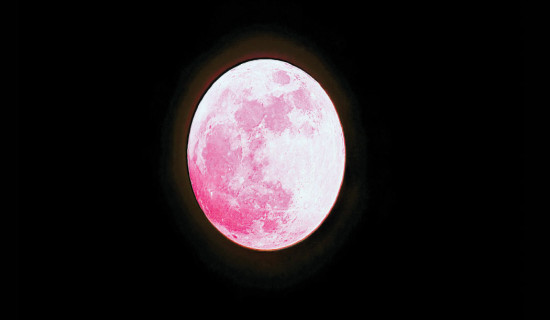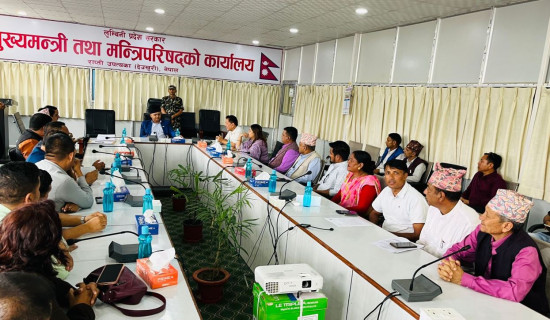- Friday, 6 June 2025
Population of rare dolphin increases in Saptakoshi River
By Sachin Pokhrel,Koshi Tappu, June 6: The population of the rare Gangetic dolphin in the Saptakoshi River has increased, reaching 22 this year from 19 last year.
A four-day survey confirmed the population growth, bringing renewed hope and encouragement to conservationists.
According to information shared during an event held on Thursday at Koshi Tappu Wildlife Reserve to mark World Environment Day, the number of dolphins in the Saptakoshi River has increased to 22 this year.
Due to increased water flow in the Saptakoshi River this year, the count was conducted only on the southern side of the Koshi Barrage. However, experts estimated that dolphins are also present on the northern side of the barrage.
Bhupendra Prasad Yadav, Senior Conservation Officer at Koshi Tappu Wildlife Reserve, described the increase in dolphin numbers as a significant achievement in terms of river health and conservation efforts. He said that plastic waste and pesticide pollution in the river remain major challenges for dolphin conservation.
According to Yadav, dolphin counts in the Saptakoshi River have been regularly conducted since 2022. This year’s census was led by Koshi Tappu Wildlife Reserve with technical support from the National Trust for Nature Conservation (NTNC), Koshi Province Office, Himalayan Nature (Kathmandu), KVR and the Rufford Foundation.
The census used two methods, encircling with nets from all sides and observing from boats. After 11 dolphins were recorded in 2012 and 17 in 2017, the reserve and other stakeholders prioritised dolphin conservation.
NTNC’s Koshi Province Coordinator, Birendra Gautam, reported that 17 dolphins were recorded in 2022, 19 in both 2023 and 2024 and 22 in 2025.
The Gangetic dolphin is not only a sensitive indicator of aquatic ecosystems but is also deeply tied to the religious beliefs of the local Majhi fishing community.
Gulabi Mukhiya, Chairperson of the Majhi Mallaha Network, said that the community worships dolphins as clan deities, a tradition preserved for generations. The river and dolphin worship ceremonies held during Kartik and Mangsir (November/December) further strengthen conservation awareness in the community.
However, Mukhiya expressed concern that illegal hunting is harming both the dolphins and the community’s religious sentiments.
The Gangetic dolphin is found only in Nepal, India and Bangladesh. Despite an increase in their population in the Saptakoshi River, experts warned that the species’ population has declined by nearly 50 per cent across these countries in recent decades. Gautam estimated the global population to be around 3,000.
A study in Nepal in 2011 estimated around 100 dolphins, but the 2018 national count found only 52. Besides the Saptakoshi River, dolphins are also found in the Karnali-Mohana region and the Narayani River. Although they were occasionally seen in the Mahakali River in the past, they are now considered nearly extinct there.
Dams and barrages built along the Nepal-India border, excessive water extraction, and river pollution are major threats to dolphin conservation. Conservationists said that dolphins that cross into India when the barrage gates open cannot return to Nepal.
As a species that indicates clean water, dolphins feed on small fish and breed between February and April. They have a gestation period of around eight to nine months and give birth to calves that begin feeding on their own after about two months.
The increase in dolphin numbers clearly shows that conservation efforts are producing positive results. The integration of community participation, religious belief and scientific methods is expected to further strengthen dolphin conservation
in the future. Also, the rising number of dolphins in eastern Nepal signals a potential for tourism development in the region.




-square-thumb.jpg)


-square-thumb.jpg)








